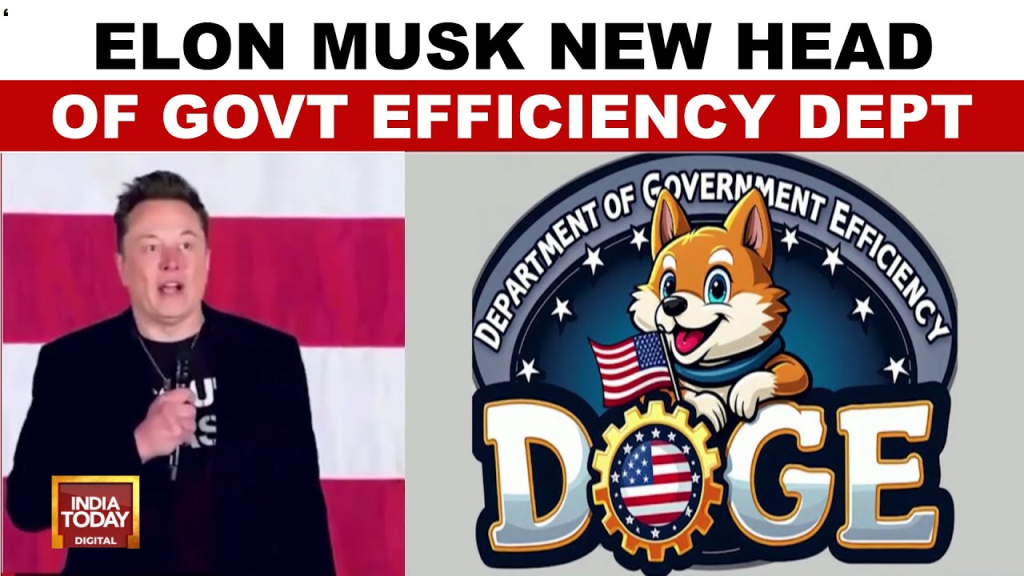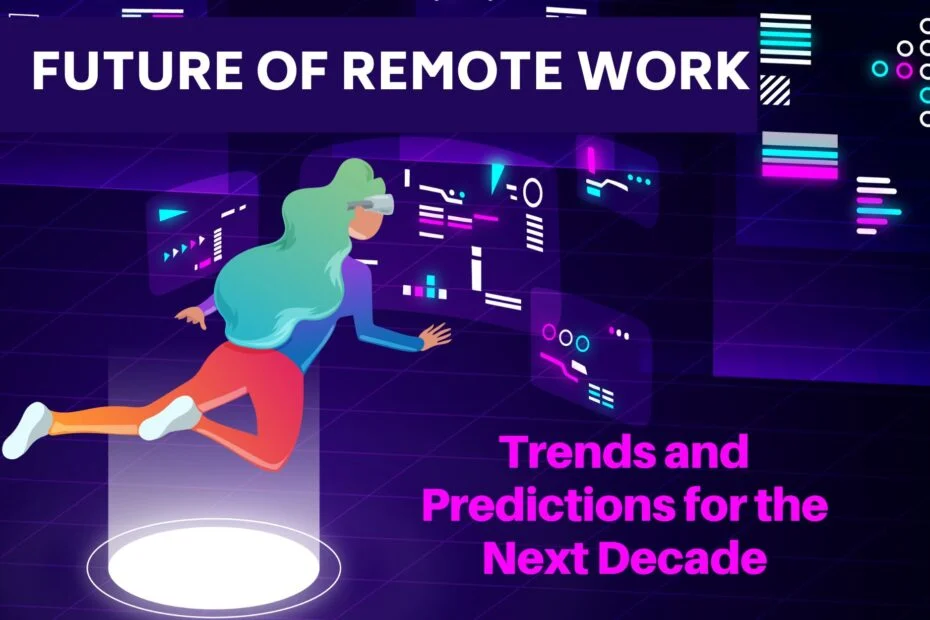Elon Musk’s impact on government efficiency has sparked heated debates, particularly regarding his approach to reforming bureaucratic structures. As he introduced a Silicon Valley mindset during the Trump administration, advocates for systemic change hailed his efforts, while critics pointed out the glaring issues stemming from such disruption. The tech industry’s relationship with government has always been complex, a reality vividly illustrated in Margaret O’Mara’s insightful book on this intersection. O’Mara emphasizes how Musk’s Department of Government Efficiency, or DOGE, embodies the very optimism that fuels the tech world—believing technology can rectify government inefficiency, even amid backlash like the Musk DOGE controversy. This juxtaposition highlights a profound tension: the American desire for a streamlined government delivering excellent services at minimal cost, a goal that remains puzzlingly unattainable yet alluring for the modern electorate.
The notion of enhancing governmental effectiveness through entrepreneurial methods is not new but has gained traction lately, particularly under the auspices of tech moguls like Musk. The push to infuse government operations with Silicon Valley dynamism reflects a broader trend in which many expect efficiency akin to the speed and adaptability found in high-tech industries. As highlighted by O’Mara, the interplay between the tech sector and its governing counterparts often results in unforeseen challenges that contrast sharply with idealistic visions of reform. Issues such as governmental ineptitude and the Musk DOGE controversy further underscore the complexities of integrating tech-driven strategies into public institutions. Consequently, the ongoing discourse prompts critical examination of how these industry leaders envision reshaping the role of government in society, balancing innovation with the essential responsibilities of governance.
The Silicon Valley Mindset in Washington D.C.
Elon Musk’s influence on the Trump administration signifies a significant shift in how technology intersects with governance. By bringing a Silicon Valley mindset to the federal landscape, Musk introduced a culture characterized by rapid innovation and disruption. However, this approach has often clashed with the systematic and deliberative nature of government. The contrasting philosophies can create a toxic environment that undervalues the crucial role of public institutions in fostering technological advancements.
Margaret O’Mara’s insights emphasize that while Silicon Valley entrepreneurs like Musk celebrate their supposed independence from government influence, the reality is that the very industries they represent flourished under governmental support. The face of innovation is not without the backing of federal funding and its complex layers of assistance, a truth that often goes unnoticed amidst the narrative of self-made success.
Government Efficiency: Lessons from DOGE
The establishment of Musk’s whimsical Department of Government Efficiency (DOGE) signifies a bold attempt to reimagining governmental operations through a tech lens. However, this approach has drawn criticism from both political scholars and the public. The notion that government inefficiency can be solved with drastic cuts and rapid, unchecked changes ignores the intricate dynamics that enable effective governance. Efforts to mimic the Silicon Valley playbook in Washington may overlook the fundamental differences between the two environments.
Musk’s efforts at DOGE provoke debate surrounding the efficacy of such a radical approach. Advocates might argue for the potential of streamlining processes, but critics, including historians like O’Mara, highlight that effective governance often requires comprehensive strategies that prioritize human capital and investment rather than mere reductions in workforce. Such methodologies acknowledge that government, much like the tech industry, must balance operational efficiency with the necessity of serving diverse community needs.
Balancing Innovation and Accountability
There is a prevalent belief among some in Silicon Valley that government operations can be streamlined or even eliminated in favor of market solutions. This reductionist view fails to recognize the role of accountability and governance in a democratic society. While innovations pushed by technology leaders like Musk may promise efficiency and lower costs, they can inadvertently lead to greater disparities in access to essential services, bearing in mind the complexities of implementing such high-speed changes.
The criticisms surrounding the Musk DOGE initiative highlight a crucial point: true governmental efficiency cannot simply be derived from downsizing or adopting a cut-throat business model. Historical precedents have shown that successful governmental reform necessitates an understanding of the multi-faceted impact that technology has on society, a lesson that the ethos of the tech industry sometimes overlooks.
The Role of Technology in Government Efficiency
The intersection of technology and government efficiency has become increasingly relevant as tech leaders like Elon Musk step into political arenas. The challenge lies in effectively integrating innovative technologies without sacrificing essential services and ensuring that government functions for all citizens. As discussions continue about operational changes within federal agencies through DOGE and similar initiatives, it becomes paramount to retain the core values of accessibility and accountability.
Margaret O’Mara’s examination of the relationship between government and the tech industry emphasizes that technology can indeed enhance operations and outcomes. However, the focus should be on cooperative relationships that foster innovation while adhering to the democratic principles that guide public service. Only then can technology serve its highest purpose: improving the lives of citizens across the nation.
The Influence of the Trump Administration on Technology Sector Relationships
During the Trump administration, the intersection of politics and the tech world became increasingly pronounced, as figures like Musk gained unprecedented access and influence. With Musk’s keen ability to engage with political power, this dynamic often led to policies favoring the tech sector, which ultimately generated debates about favoritism and conflicts of interest. The transactional relationships fostered during this time underscored a shift in how the tech industry navigated governance.
This engagement can be seen not just as an alliance but as a complex game where both parties have at times appeared to exploit the other’s weaknesses. The motivations behind these high-stakes relationships raise questions about the foundational integrity of democracy. As O’Mara articulates, the reasonable questioning of these ties reveals the potential pitfalls of intertwining technological ambitions with political agendas.
The Myths of Silicon Valley Superiority
Silicon Valley often embraces an ideology that positions its innovators as superior to traditional governmental roles, perpetuating a myth of self-reliance among tech entrepreneurs. This narrative, fueled by the successes of industry titans, can lead to an underestimation of the indispensable role that government has played in nurturing these innovations. Musk’s approach to governance epitomizes this disconnect, as he often dismisses the historical interplay between the federal government and the rise of technology.
By fostering a disdain for traditional bureaucratic structures, proponents of this mindset often overlook the notion that government involvement has catalyzed much of the innovation celebrated in Silicon Valley. O’Mara argues that acknowledging this intertwined history is crucial in order to develop balanced, informed approaches toward government efficiency and the tech industry’s role within it.
The Challenge of Enacting Reform in Government
Efforts to enact sweeping reforms in government operations, as seen with Musk’s initiatives, highlight significant challenges. While there is an undeniable need for improvements in efficiency, the manner in which measures are implemented can greatly impact their effectiveness. The considerable turnover and hasty implementations often associated with drastic reforms can lead to instability rather than the desired efficiency.
A balance must be struck between innovation and stability in government functions. This requires a thoughtful approach that acknowledges the unique challenges faced by public institutions. As emphasized by O’Mara, meaningful change is possible only through a comprehensive understanding of governmental processes and effective stakeholder engagement.
Understanding the Dynamics of Government and Business
The notion that government should operate akin to a business is a recurring trope in modern political discourse. However, this simplification ignores the fundamentally different roles that each sector plays in society. While businesses strive for profit maximization, government agencies focus on equitable service delivery to a diverse populace. The implications of this disparity yield significant ramifications for policies shaped in the spirit of business efficiency.
Critics argue that implementing a business-like structure within government can lead to neglect of vital public services that aren’t as financially lucrative. Rather than pursuing a one-size-fits-all model, a nuanced understanding of both sectors’ unique challenges is required. Such insights can guide reform efforts that enhance efficiency without compromising fundamental societal obligations.
The Continuing Debate on Government Efficiency
The ongoing conversation about the role of tech in fostering government efficiency reflects broader societal questions about the ideal relationship between public institutions and the private sector. As the Musk DOGE initiative continues to evolve, stakeholders must critically examine the implications of adopting corporate strategies within a governmental context. Ensuring that these strategies do not undermine the essential functions of public service is crucial.
Decisions regarding the efficiency of government ultimately impact citizens’ lives in tangible ways. A robust debate must ensue to determine how best to harness technological advancements while preserving the integrity and core mission of government entities. The challenges highlighted in this discourse serve as a reminder that the conversation about government efficiency is far from over.
Frequently Asked Questions
How does Elon Musk’s approach to government efficiency reflect the Trump administration’s views on Silicon Valley?
Elon Musk’s approach to government efficiency embodies the Trump administration’s affinity for Silicon Valley’s mindset, marked by a belief in radical modernization and skepticism of federal operations. Musk advocates for rapid changes and deregulation, akin to the Trump administration’s views that often clash with traditional governmental protocols.
What insights does Margaret O’Mara provide about the relationship between the tech industry and the government in her book?
Margaret O’Mara’s book, ‘The Code: Silicon Valley and the Remaking of America,’ outlines how the federal government significantly contributed to the tech industry’s success by investing in research and education. She critiques the common belief in Silicon Valley that dismisses government as inefficient, emphasizing that government funding and backing were crucial for tech innovations, contradicting Musk’s narrative of anti-government sentiment.
How does government inefficiency impact Elon Musk’s initiatives, especially in relation to DOGE?
Elon Musk’s Department of Government Efficiency (DOGE) aims to dismantle perceived government inefficiencies by implementing drastic measures like mass layoffs. However, this approach raises concerns about overlooking essential services and the complexity of federal programs that differ from Musk’s business ventures, where efficiency is prioritized.
What is the significance of Musk’s management style, particularly regarding his operations at Twitter and its implications for government efficiency?
Musk’s management style, characterized by aggressive cuts and a ‘results-driven’ approach, raises questions about its applicability in government where outcomes and services to the public are paramount. While Musk’s method succeeded at Twitter by reducing workforce size, applying this model to government agencies could undermine essential programs and public welfare.
Why is there a disparity between Elon Musk’s techno-optimism and the realities of government bureaucracy?
Elon Musk’s techno-optimism drives the belief that technology alone can revolutionize public services, yet this perspective clashes with the realities of government bureaucracy, which involves complex social responsibilities. This disparity suggests a fundamental misunderstanding of how government functions and the necessity of comprehensive support systems, contrary to Musk’s often simplistic view of efficiency.
How does the relationship between Silicon Valley and the federal government illustrate tensions in Elon Musk’s vision for efficiency?
The relationship between Silicon Valley and the federal government highlights tensions in Musk’s vision for efficiency, as his approach often underestimates the integral role that government played in fostering innovation. Musk’s push to eliminate bureaucracy can jeopardize the collaborative framework that allows for technological advancement—an essential factor that shaped the success of the tech industry.
What challenges arise from Elon Musk’s controversial tactics in his quest for government efficiency?
Challenges from Elon Musk’s controversial tactics for achieving government efficiency include potential destabilization of critical programs and public services. His aggressive approach may yield short-term results but could lead to long-term consequences, raising concerns about the sustainability and effectiveness of federal operations amid drastic cuts and reshuffling.
| Key Point | Summary |
|---|---|
| Elon Musk’s Approach | Musk has applied a Silicon Valley mindset to government, reducing federal employee numbers drastically and promoting a chaotic, disruptive style. |
| Underestimating Government’s Role | Musk fails to acknowledge the essential contributions of the federal government to the tech industry’s success, including funding and infrastructure. |
| Techno-Optimism | Musk operates under the belief that technology inherently improves society, often overlooking the collateral damage. |
| Disruption Over Structure | His approach has led to the wanton firing of employees and a disregard for systematic government operations. |
| Misconceptions About Efficiency | Musk’s belief that government should operate like a business ignores the complexities of public service and the need for inclusive policies. |
| Historical Perspective | Historians like Margaret O’Mara highlight the foundational role of government in building Silicon Valley, a fact Musk’s narrative overlooks. |
| Consequences of Disruption | The chaos in Musk’s government efficiency measures raises concerns about the effective delivery of public services. |
Summary
Elon Musk government efficiency reflects a commitment to transforming governmental operations through a disruptive Silicon Valley lens. However, this has revealed profound misunderstandings about the role of government in technological advancement and public service. The insistence on rapid change and chaos often undermines the very structures that support societal growth, as highlighted by experts like Margaret O’Mara. The push for efficiency must balance innovation with the complexities of public accountability and service delivery, underscoring that government cannot merely replicate business practices without risking critical losses in service and engagement.



